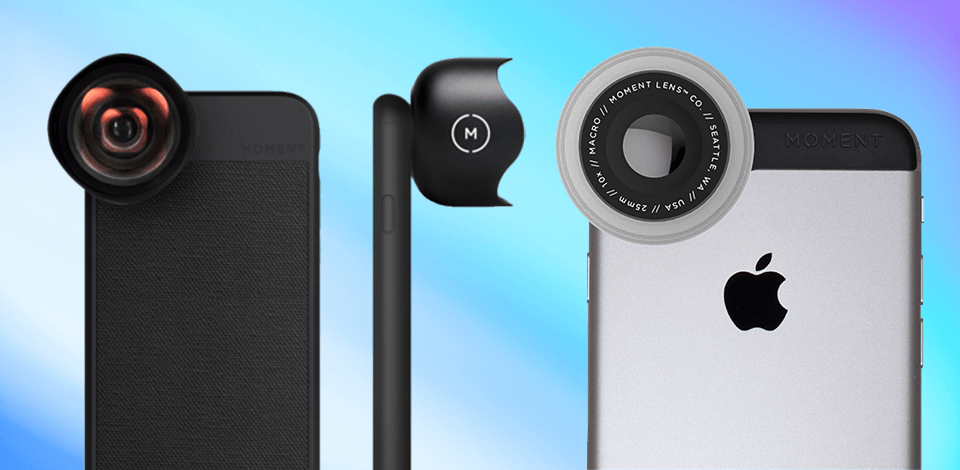
Even though the quality of phone camera lenses is improved each year, they still can’t compare to specialized camera lenses. A clip-on lens can help you start taking better macro photos, a telephoto model - action scenes, anamorphic lenses are great for recording videos, etc.
If you’re interested in finding the best mobile phone camera lens to improve your photography level, a product like Moment’s Wide Lens will allow you to take super-wide shots with eye-catching lens flares, which is something you can’t get even from the newest iPhone.
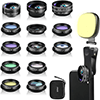 If you want to take different types of photos instead of limiting yourself to macro or wide-angle shots, I suggest buying a set of 14 lenses. It comes with a selfie ring light, 0.63X wide angle lens & 15X macro, 2X telephoto lens, 198° fisheye lens, 3/6 kaleidoscope lens, CPL filter lens, radial filter lens, starburst lens, and blue/green/yellow/purple models, ensuring each model provides a distinct look.
If you want to take different types of photos instead of limiting yourself to macro or wide-angle shots, I suggest buying a set of 14 lenses. It comes with a selfie ring light, 0.63X wide angle lens & 15X macro, 2X telephoto lens, 198° fisheye lens, 3/6 kaleidoscope lens, CPL filter lens, radial filter lens, starburst lens, and blue/green/yellow/purple models, ensuring each model provides a distinct look.
★★★★☆ (4.5/5) For vlogging
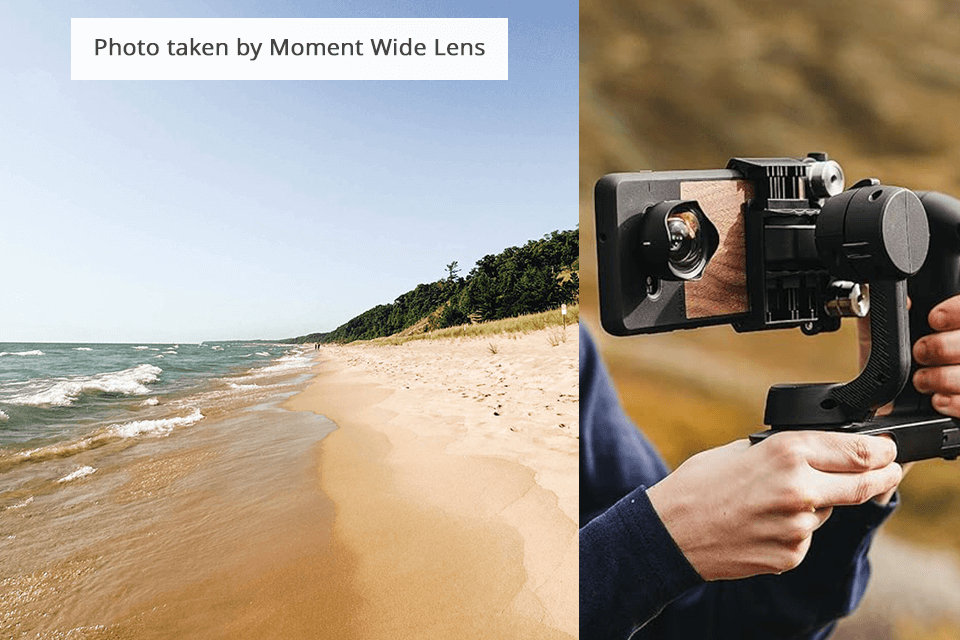
Compatibility: iPhone, Pixel, Galaxy, and One Plus phones | Lens type: Wide-angle | Weight: 2.69 ounces
After trying out the Moment Wide 18mm lens during a couple of photoshoots as well as using it to record YouTube vlogs, I think it’s the best phone camera lens attachment if you’re looking for a lightweight setup that is more convenient than a regular compact camera.
I was impressed by the picture quality provided by this wide-angle lens that I attached to my camera phone. I managed to snap some beautiful shots of the Singapore cityscape and even took breathtaking nighttime photos from the Sands ‘surfboard’ observation deck without having to meddle with any settings. This lens has a sturdy build while remaining relatively lightweight. It was delivered in a handy bag and has a lens cap to put on when you’re carrying it around.
★★★★☆ (4.5/5) Attractive price
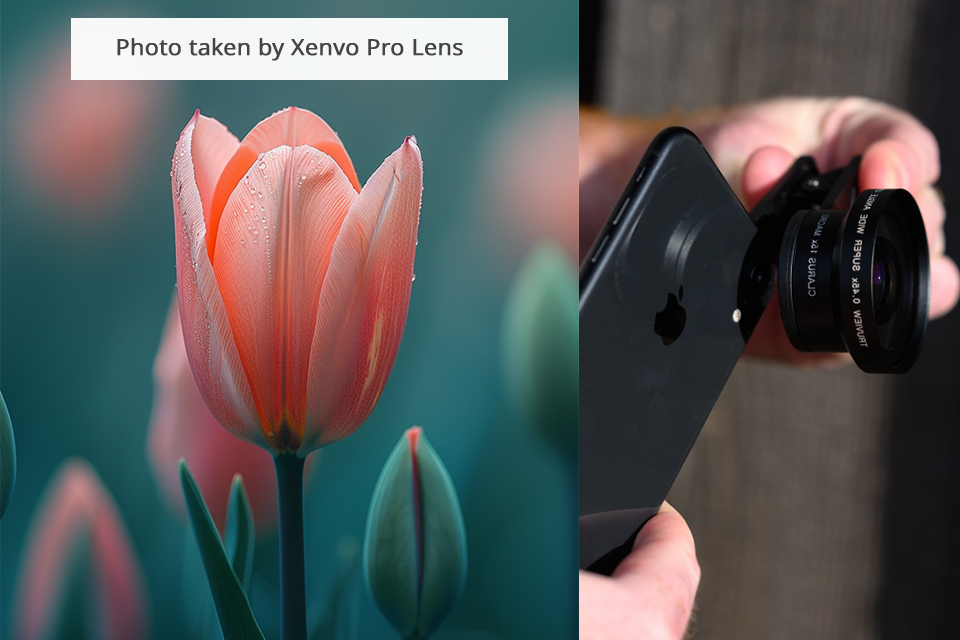
Compatibility: Majority of iPhone and Android smartphones | Lens type: Wide-angle, Macro | Weight: 3.65 ounces
I added this kit to the list because of its low cost, portable nature, and solid results. The package also includes an LED light as well as a handy fast-release lanyard for transporting the lens around the neck. Alternatively, you can conveniently put it into a pocket.
I was happy to see that the attached lens didn’t add any halo or vignette effect to the photos, ensuring the view remains clear and the images look great. Additionally, these iPhone camera accessories don’t distort the colors and preserve high picture clarity. I also want to mention that the 15x Macro lens is a leg above the more typical 10x and 12x models included in other kits.
★★★★☆ (4/5) Macro
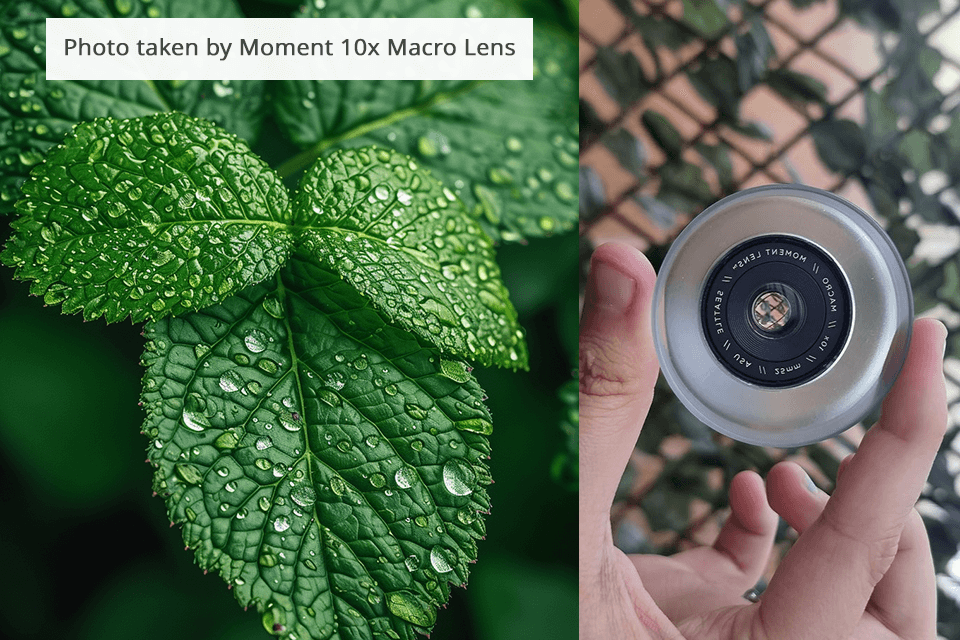
Compatibility: iPhone, Pixel, Galaxy, and One Plus smartphones | Lens type: Macro | Weight: 2.56 ounces
I took this lens on trips that made it impossible to also pack my DSLR and I could only rely on my smartphone. This model is pleasantly lightweight and compact, serving as a perfect travel companion. Attaching and replacing it with a different lens is also very easy.
It helped me implement most of my macro photography ideas, as I used it to take beautiful close-up pictures of a spider. The main drawback of this lens is how precise you have to be to get the focus right.
However, once you master the process of focusing your phone camera with this lens, you’ll be completely satisfied with the result.
★★★★☆ (4/5) Wide-angle model
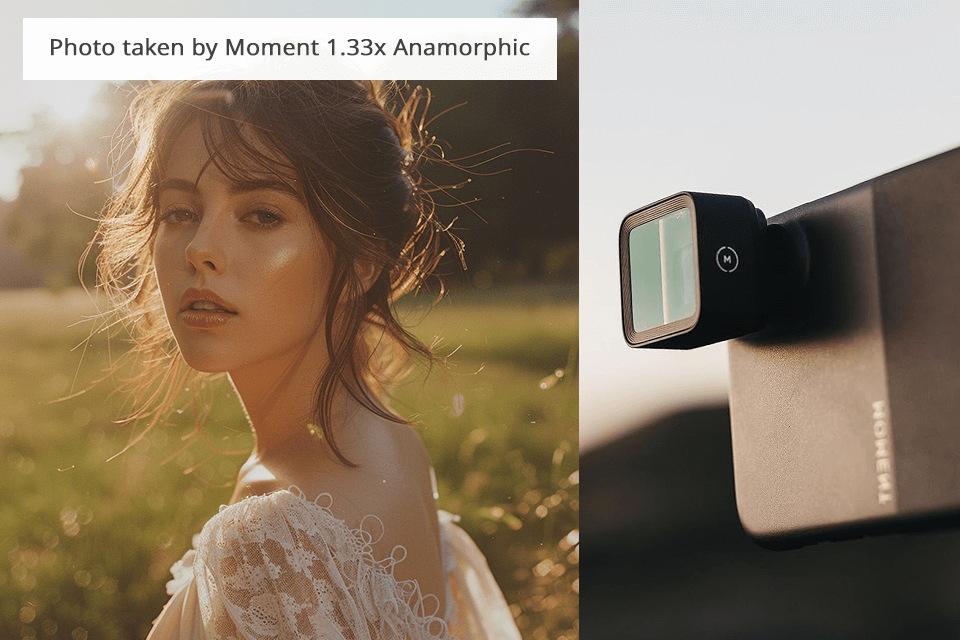
Compatibility: iPhone, Pixel, Galaxy, and One Plus smartphones | Lens type: Anamorphic | Weight: 1.33 ounces
I love the look and picture quality provided by this lens. It adds an aesthetically pleasing distortion to the shots, which is a particularly good fit for landscape photos and nature videos. I usually pair it with my iPhone 13 Pro Max by using a SmallRig cage (you need a mount to attach it).
Thankfully, the manufacturer provides a variety of cases that will allow you to connect the lens to any phone you want, and you can also get an adapter to use one of Moment’s filters. After you lock it in place, this 1.33x anamorphic lens will allow you to enjoy fantastic picture image quality.
★★★★☆ (4/5) HD optics
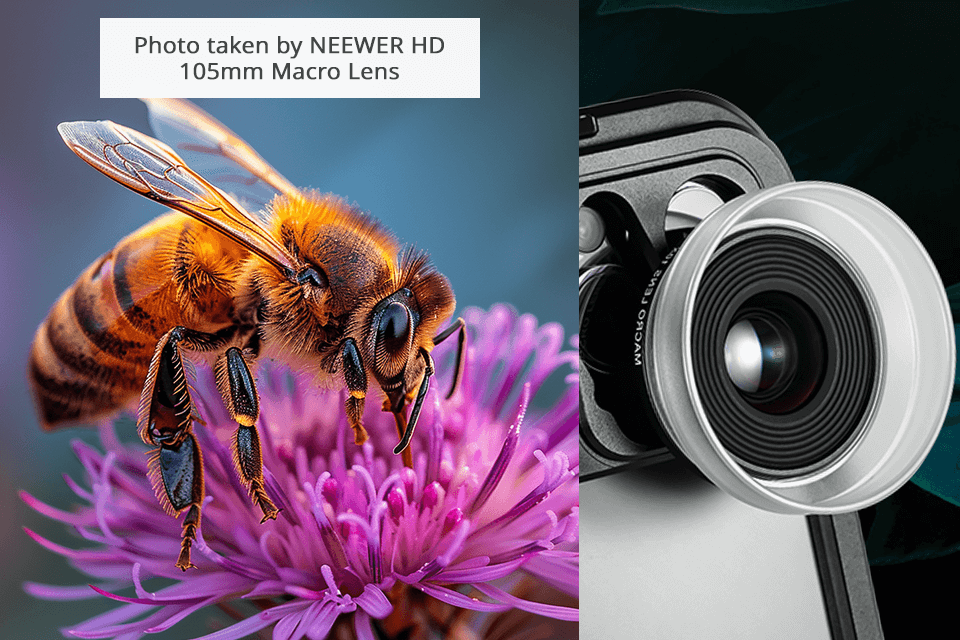
Compatibility: iPhone, Galaxy, and NEEWER smartphones | Lens type: Macro, Wide-angle | Weight: 5.5 ounces
I had a great time pairing this lens with my Neewer iPhone cage that I purchased a while back to record videos. The smartphone photos I took had a beautiful bokeh that added an artistic vibe to them.
This lens has a minimum focusing distance of 4”, which allows you to avoid getting too close to the subject while still getting a macro effect. I used this lens to take pictures of both tiny ladybugs and bigger creatures like squirrels.
On the downside, this model requires a cage or a backplate with a 17mm thread since otherwise, you won’t be able to attach it to your phone.
★★★★☆ (4/5) 3-in-1 set
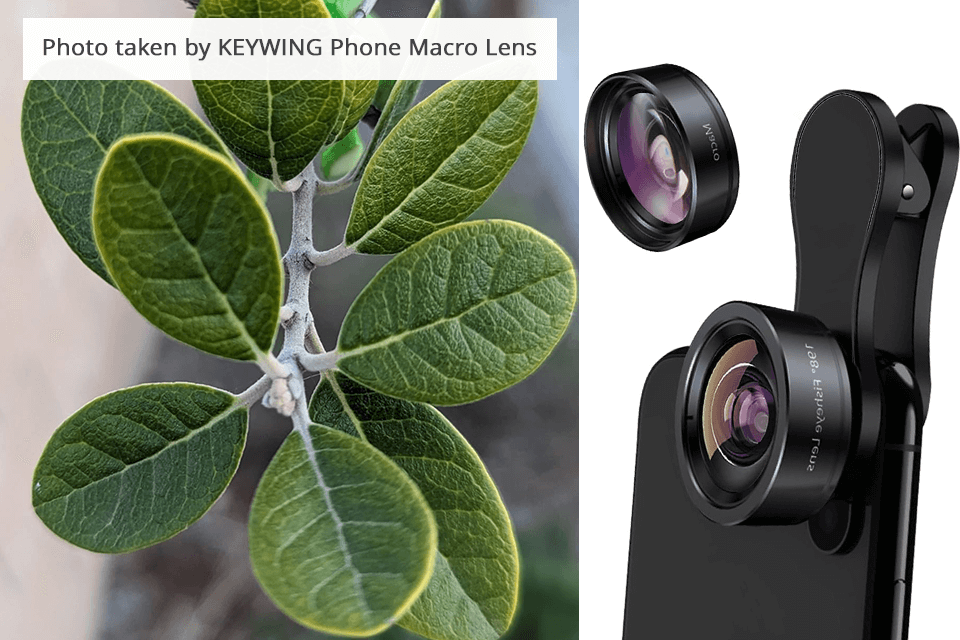
Compatibility: iPhone, Galaxy, Google Phones, etc. | Lens type: Macro, Wide-angle, Fisheye | Weight: 3.2 ounces
I got this kit primarily for its 20x macro lens since I wanted to use it for a botany project. Given how cheap it is, I didn’t expect it to be the best phone camera macro lens out there, so I was pleasantly taken aback by its performance. It allowed me to get so close to the subject that I captured the eyes of a spider that was sitting on a flower. That is fantastic considering I’m not a professional macro photographer.
I tested two other lenses from the kit and both added vignetting to the photos. I found the fisheye lens to be completely unusable and the wide-angle to perform decently if you zoom in a little. The macro lens is great other than the noticeable distortion added outside the focal point.
★★★★☆ (4/5) 9-in-1 kit
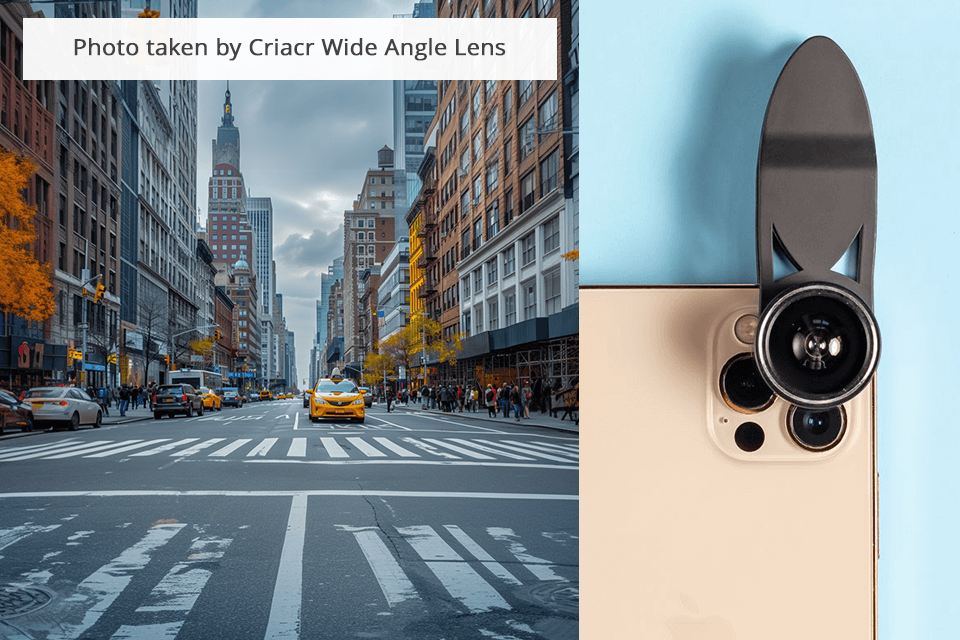
Compatibility: iPhone, HUAWEI, Galaxy, etc. | Lens type: Wide-angle, Super wide-angle, Macro, Telephoto, Fisheye, CPL, Starburst, Kaleidoscope | Weight: 2 ounces
One of my projects had me taking pictures of a lot of interior spaces. Previously, I worked on it using a big professional camera with a wide-angle lens, which was very uncomfortable. This set helped me avoid such an unpleasant experience by simply carrying it in my purse and taking wide-angle pictures of different rooms using my smartphone.
The provided macro lens also produces terrific results. The only caveat is that I have to get super close to the subject to focus on it. The expansive nature of this kit opens up a lot of possibilities, but the provided manual is basically useless, meaning you’ll have to experiment to find out what you can get from each lens.
★★★★☆ (4/5) Perfect for camping and bird-watching
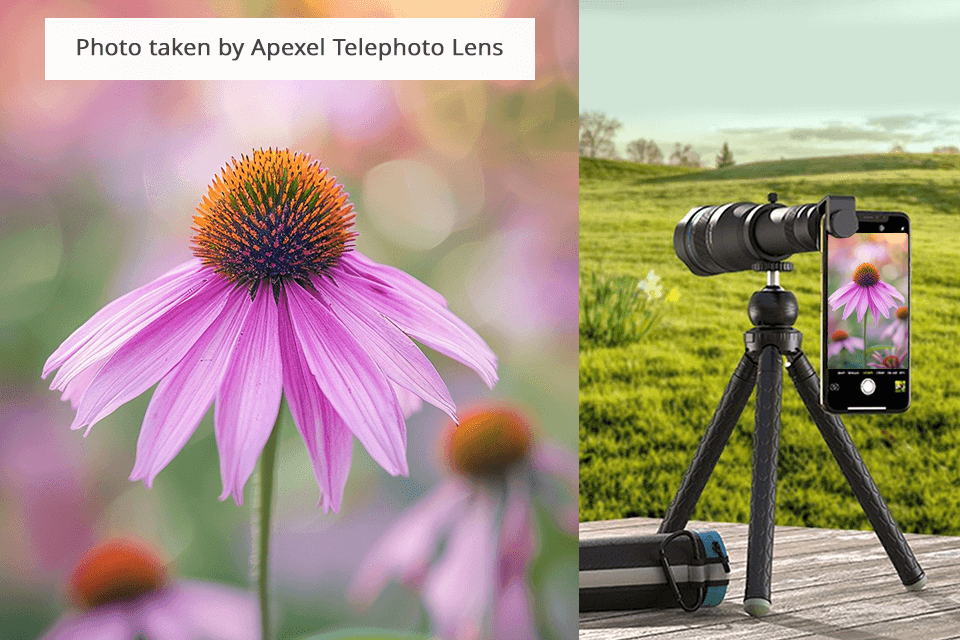
Compatibility: Most popular smartphones | Lens type: Telephoto | Weight: 1 pound
This lens instantly impressed me with its build quality. Its design and feel remind me of an $850 35mm lens that I use with my main camera. Moreover, the photo quality provided by this Apexel model has convinced me that it’s the best phone telephoto lens on the market, representing a fantastic option for law enforcers, surveillance, sports, birdwatching, wildlife photography, sightseeing, and other purposes.
Whenever I go on my next trip, I’m definitely bringing this lens with me.
What I didn’t like was the tripod included in the package. I tried using it to make a DIY iPhone tripod. However, the mounting bracket on top is made of plastic and isn’t durable enough to support the weight of both the lens and a modern smartphone. Even if you place the tripod on a solid surface, it can still wiggle all over the place.
★★★★☆ (4/5) Telephoto build
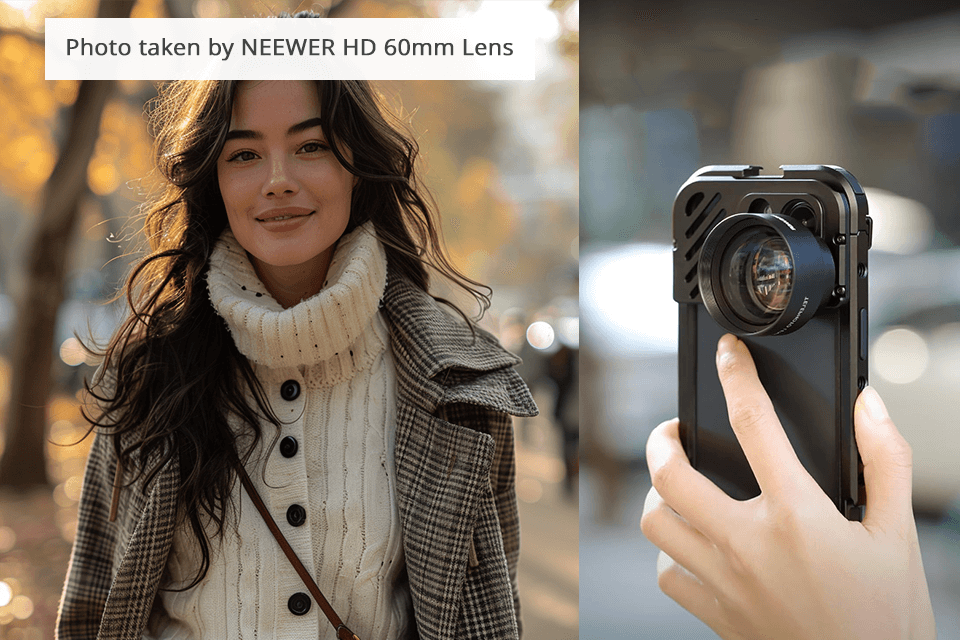
Compatibility: iPhone, Samsung smartphones | Lens type: Macro, Standard, Wide-angle | Weight: 3.53 ounces
If your goal is to improve the zoom of your smartphone camera, this lens is a great choice as long as you’re willing to make a few concessions. This model is rather heavy, weighing 104 grams, and looks somewhat big when attached, so you can’t wear it constantly and you won’t be keeping the phone in a pocket when it’s connected.
Thankfully mounting/detaching the lens is pleasantly simple so you won’t have any issues storing it separately as long as you’re not in a hurry.
I’m happy with all the other aspects of this lens. It offers a far superior zoom compared to the built-in digital zoom of my phone and it’s small enough to fit in my pocket along with a mount when detached.
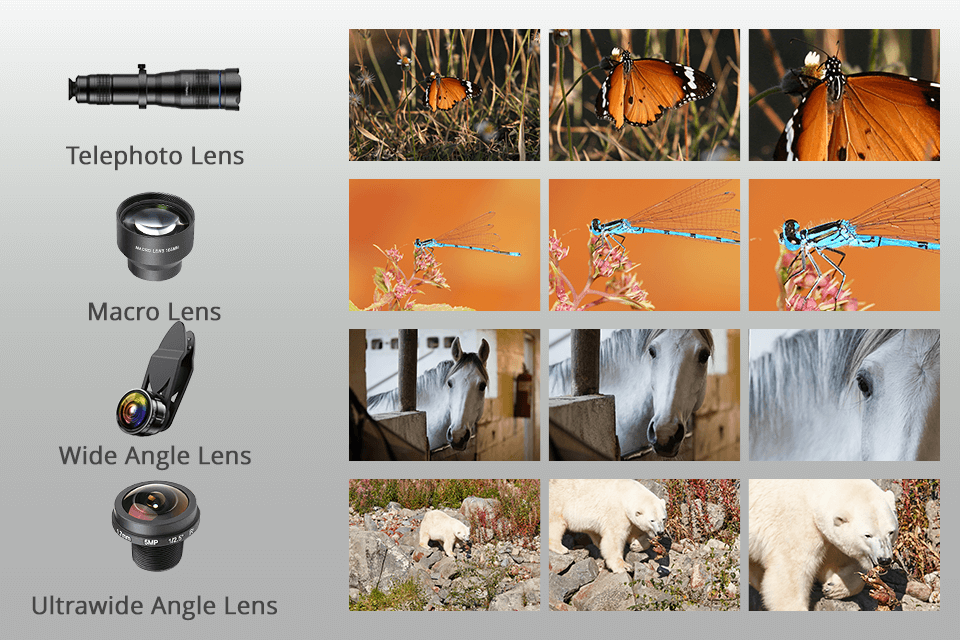
Before you can pick the best lens for phone cameras, you need to decide what type of pictures you plan to take. Wide-angle nature photos, close-up portraits, or macro shots of flowers and insects? Each lens type serves to satisfy a specific purpose.
Ease of use. We are all interested in devices that are easy to use. Choose the lens that occupies little space, is easy to attach/detach, and can be quickly aligned with the phone's camera.
Compatibility. Some people mistakenly think that phone cameras are compatible with all smartphone types, models, and brands. But, it isn't true. If you want to buy the best lens you're your smartphone, you need to check the compatibility list.
Material. The material of the unit is the key factor that affects its durability. Choose devices that are made of solid, weatherproof, and shockproof materials, and don’t waste money on fragile, low-quality phone camera lenses.
Size. This parameter is frequently underestimated by mobile photographers. However, the size of your gear matters a lot, especially if you are constantly on the go and need something portable that can easily fit in a pocket.
Attachment type. Clip-on lenses are the most budget-friendly and intuitive option, but they tend to be somewhat large and cumbersome to use. Clamp-on models provide a tighter grip and improved picture quality, while housing cases offer the best protection and stability.
No, that is not the case. Even though certain models advertise universal support, it’s important to verify if they're compatible with your phone by examining the list provided by the manufacturer. Some smartphones come with different camera placements and sizes, meaning the lens you purchase might not be a perfect fit.
Even though more products typically provide better quality and functionality, some reasonably priced lenses can also deliver pro-level results. As such, I suggest finding the middle ground between high-end technical specifications and budget-friendliness to ensure you cover your needs without going broke.
The biggest benefit of getting lenses for your smartphone camera is to diversify the types of pictures you can take or videos you can record. The built-in camera is often incapable of taking zoomed-in, macro, or wide-angle shots on the same level as dedicated lenses.
Regardless of which telephoto lens you pair with your smartphone, the images will be blurrier than if you used a wide-angle or fisheye lens. That’s caused by the fact that telephoto models suffer more from handshake and vibrations and most phones don’t have reliable image stabilization. I recommend getting an iPhone tripod if you want to use a telephoto lens.
Certain lenses block the phone’s flash, meaning you’ll have a harder time taking pictures in low-light conditions. That is one problem that you’ll never have with an interchangeable lens camera.
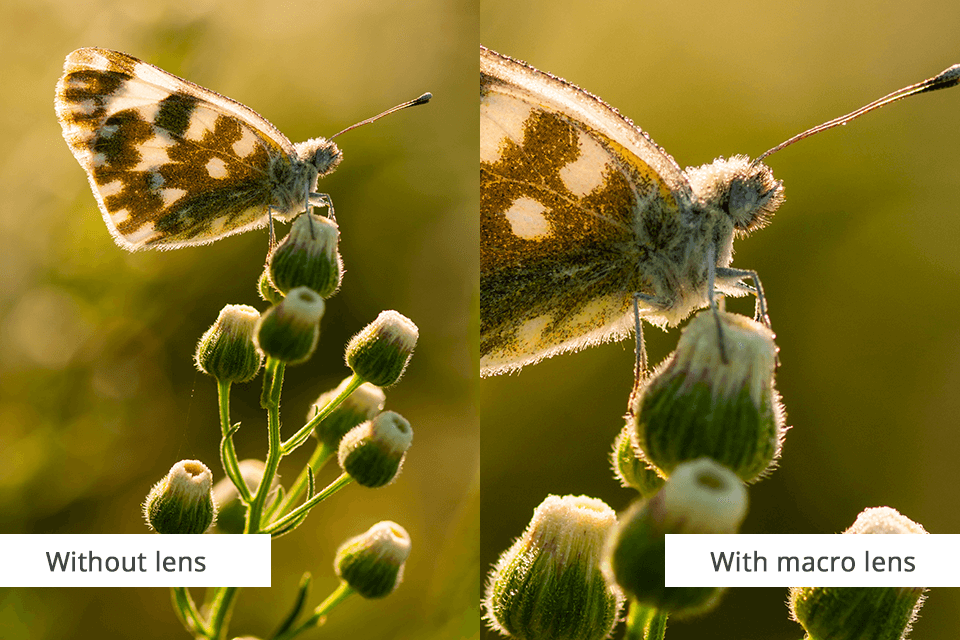
Nowadays, many smartphones, like Samsung S24 Ultra, are equipped with AI camera functionality, so a lot of users think that buying separate lenses is a waste of money. However, there's a reason why photographers who use digital cameras invest in expensive lenses despite having access to premium image post-processing software – I, for instance, often use reputable Photoshop apps for my work. It all comes down to the feeling you get during the shoot – do you want to enjoy the process of taking photos or simply snap the needed picture and be done with this?
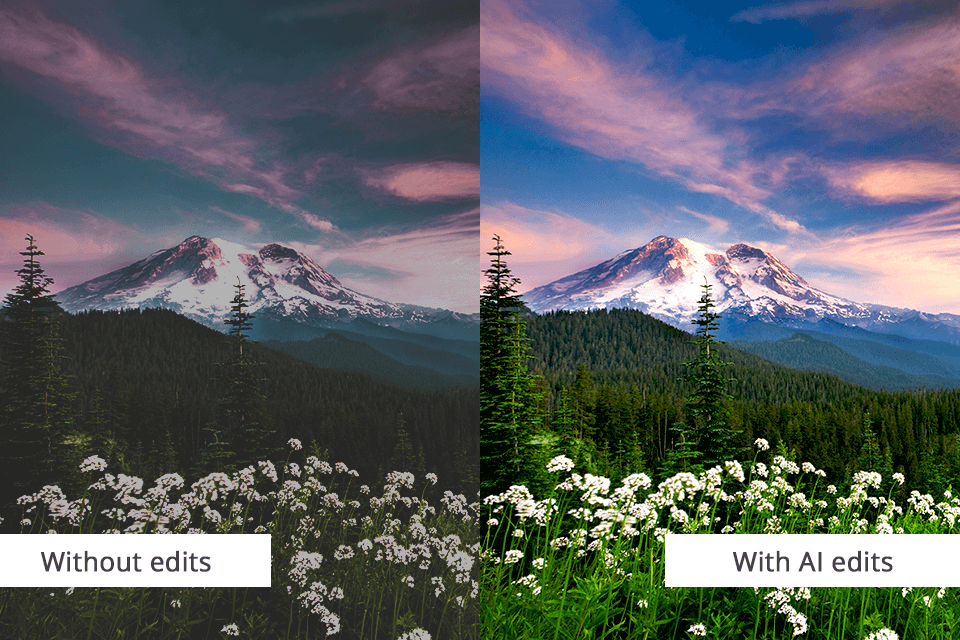
Additionally, image enhancements made with the help of AI still often look unrealistic compared to manually taken pictures. This is especially true if you want to take a close-up photo or a picture with a fisheye effect.
| Phone Camera Lenses | AI Enhancing Tools |
|---|---|
|
Versatility: They come in various types, including wide-angle, macro, and telephoto, which can expand the number of photography genres and subjects you can tackle. |
Scene optimization: AI can examine the scene and tweak the camera parameters to ensure you enjoy optimal colors and exposure. |
|
Quality enhancement: High-quality lenses are great at making the photo sharper and clearer. |
Post-processing: AI features can automatically enhance images after you take them, tweaking such parameters as contrast, brightness, and even composition. |
|
Creative control: Physical lenses let you try out different depth-of-field parameters and various creative techniques. |
Convenience: AI tools like automated scene recognition and portrait mode enhancements simplify the task of creating high-quality photos without having to make manual edits. |
What is the better option? I think that you should combine both tools, leveraging their benefits to receive the optimal image quality. If you’re doing photography because you practice it as an art form and would like to control the look of each shot to the tiniest detail, physical lenses are more flexible.
However, a regular user who simply wants to take beautiful photos without messing around with lenses and settings will benefit more from AI tools.